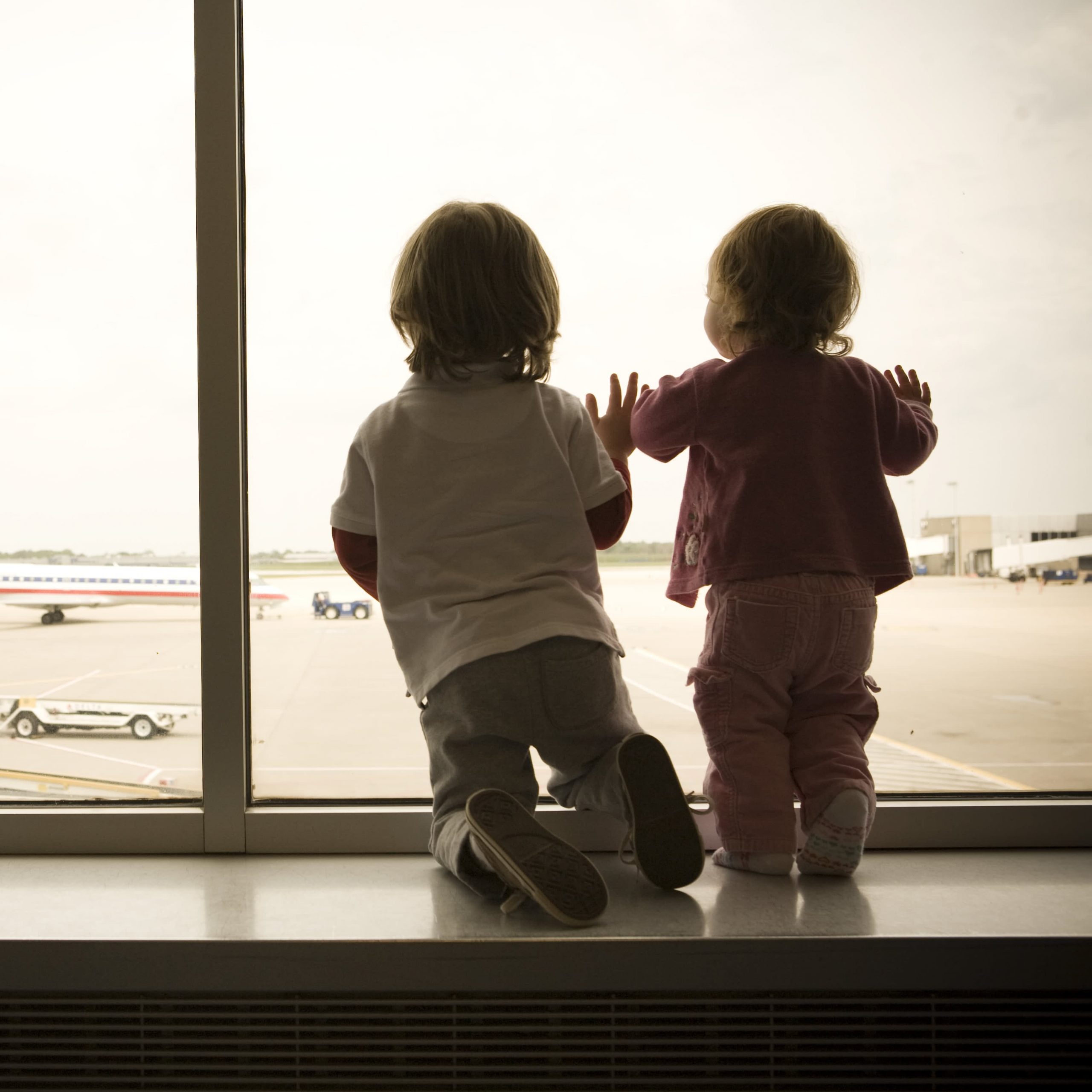
- POPSUGAR Australia
- Living
- Thinking About Flying With Kids? Here's What to Consider Before You Book That Flight
Thinking About Flying With Kids? Here's What to Consider Before You Book That Flight

With social-distancing regulations loosening across the United States, parents may be wondering when it’ll be safe to fly with the kids again. Although the CDC outlined safety measures in the beginning of the COVID-19 outbreak, not much has changed in terms of guidelines. However, TSA hopes to put new airpot regulations into effect by mid-June, as the number of people boarding flights has been slowly increasing. The bottom line? Only fly with your family if you absolutely need to.
Related: Should You Put Your Kids Back in Day Care? An Expert Weighs In
Is Flying With Children Amid COVID-19 Safe?
Before booking a flight, parents should consider if traveling is really necessary. A preplanned family vacation, for example, isn’t something that you should be hopping on a plane for.
“The CDC is still recommending against all nonessential travel because people can be asymptomatic,” Dr. Jean Moorjani, a pediatrician at Arnold Palmer Hospital For Children in Orlando, FL, told POPSUGAR. “So you might be asymptomatic, and if you travel, you may spread it to the place you’re visiting. You could also run into people who are asymptomatic and become infected.”
Families’ best bet to stay safe? Staying home entirely or considering a safer mode of transportation, like driving, perhaps in an RV. “At the end of the day, if the virus never meets you, you can never get sick,” Moorjani explained. “So the safest thing is obviously to tell people to stay home. We also understand that that might not always be possible, so parents really have to look at their situation and make the best decisions for their families.”
What Should Parents Consider If They Have to Fly With Their Kids?
According to the CDC, there are several things to keep in mind before considering flying with your children, as navigating an airport safely comes with many obstacles.
“Air travel requires spending time in security lines and airport terminals, which can bring you in close contact with other people and frequently touched surfaces,” the CDC cautions on its website. “Most viruses and other germs do not spread easily on flights because of how air circulates and is filtered on airplanes. However, social distancing is difficult on crowded flights, and you may have to sit near others (within 6 feet), sometimes for hours. This may increase your risk for exposure to the virus that causes COVID-19.”
“Washing your hands properly is really going to be one of the best ways that you can keep your family healthy.”
Moorjani underscored the importance of teaching kids preventative measures. “Depending on their ages, parents should emphasize keeping your hands to yourselves and really trying not to touch things that don’t have to be touched,” she explained. “We also can’t emphasize good hand hygiene enough. Washing your hands properly is really going to be one of the best ways that you can keep your family healthy.”
Additionally, families should consistently practice social distancing whenever possible, and children who are over the age of 2 should wear a mask if they’re at the airport or on a flight. “Personally, if I had to travel, both my kids and I would wear masks,” Moorjani said. “Parents should also emphasize that wearing a mask, even though it may not protect you personally, helps protect other people from you.”
Related: We Need to Talk About Why Businesses Are Opening Up Before Child Care
Finally, to account for any new safety procedures that are being put into place, families should arrive at the airport even earlier, as security and screening procedures may take longer.
“TSA has implemented procedures to increase social distancing and reduce direct contact between our employees and the traveling public whenever possible – all without compromising security,” reads the TSA website. “Adjustments include metering passengers to increase distance between individuals as they enter the security checkpoint queue, placing visual reminders of appropriate spacing on checkpoint floors and staggering the use of lanes in the security checkpoint where feasible.”

